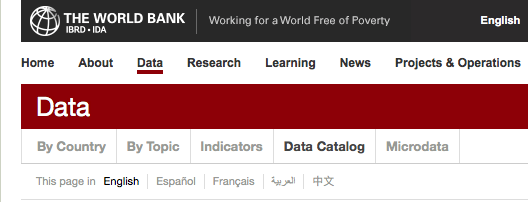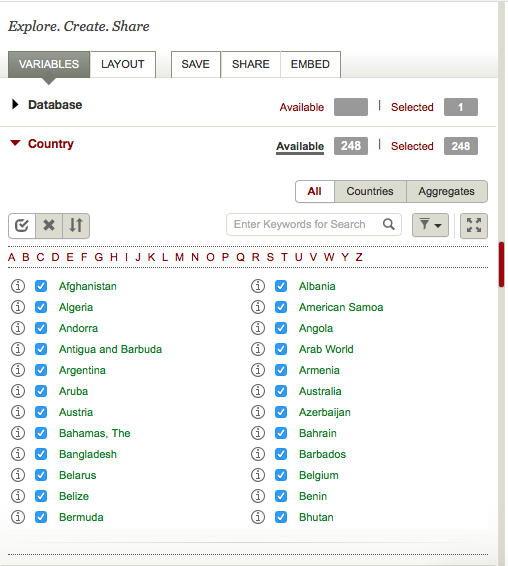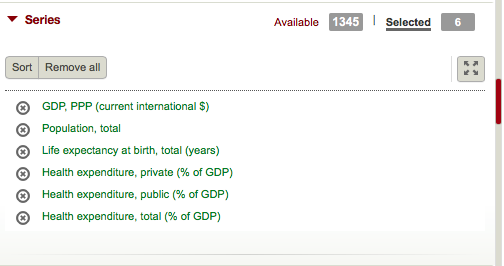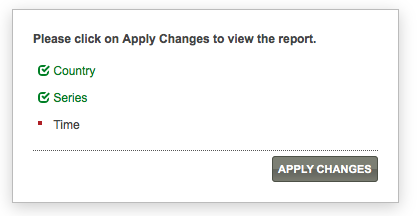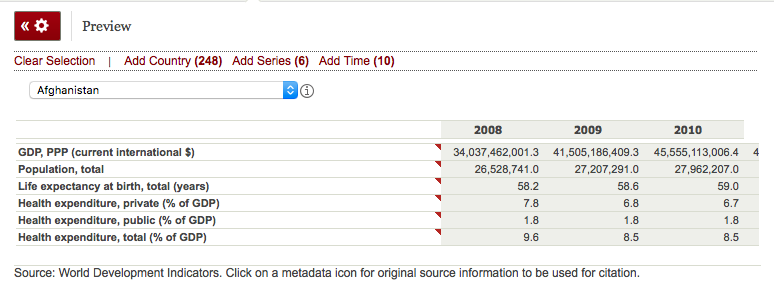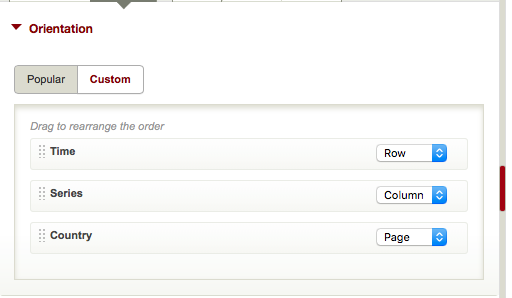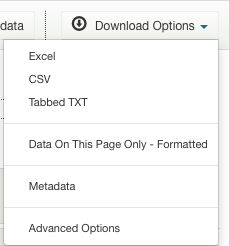-
Open the World Bank data portal: it lives in http://data.WorldBank.org
-
Select Data Catalog from the menu on the top.
-
In the long list on the bottom find “World Development Indicators”
-
Click on the left on the tabular icon
-
You’ll find a very different site: The Databank – The databank is an interface to the World Bank database. You can select what data you want to see from which countries for what period of time.
-
First select the countries. We’re interested in all the countries so click on select all (check box icon). You can see how many countries you have selected in the top right corner.
-
Click on the Series under the Country view. Now you’ll see a long list of data series you can export. We’ll need a few of them.
-
Select “Health expenditure, private (% GDP)”, “Health expenditure, public (% GDP)” and “Health expenditure, total (% GDP)”.
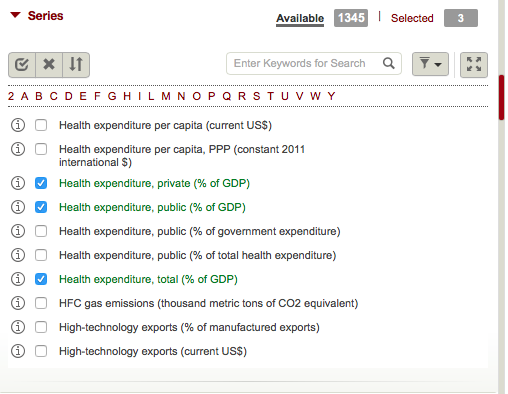
Since the expenditure is in % of GDP we’ll need to get the GDP as well. Since we want to compare countries directly we’ll need GDP in US$. To do this type GDP into the search box and find the entry “GDP, PPP (current international US$)”
-
If we want to see how healthcare expenditure affects the life expectancy we need to add life expectancy to the data. Search for “Life expectancy at birth, total (years)”.
-
Now let’s add one more thing: Population – like this we can calculate how much is spent by and on an average person. Search for “Population” and select “Population, total”.
-
Click on the selected Series on the top left corner. Bring GDP and Population to the top (drag-and-drop) on the side of the list, your selection should now look like this:
-
Click on Time to select the years we are interested in.
-
To keep things simple, select the last 10 most recent years
-
Click on Apply Changes
- You’ll see a preview of the data
- On the top left there is a rough layout of how your downloaded file will look like. You’ll see “time” in the columns bit and “series” in the rows bit – this influences how the spreadsheet will look like.
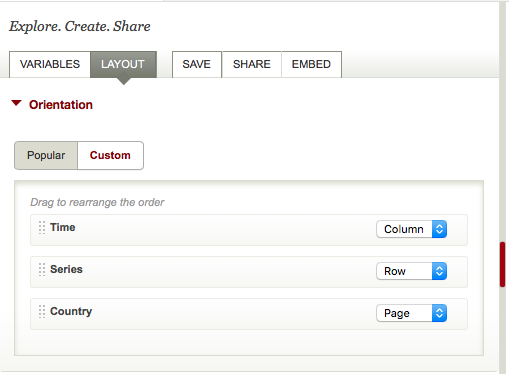
-
While this might be great for some people: The data is a lot easier to handle if all of our “series” are in columns and the years are different rows. So let’s change this.
-
Your arranged organization diagram should look like this:
- You should noticed the Preview changed. This is how your downloaded file will look like.
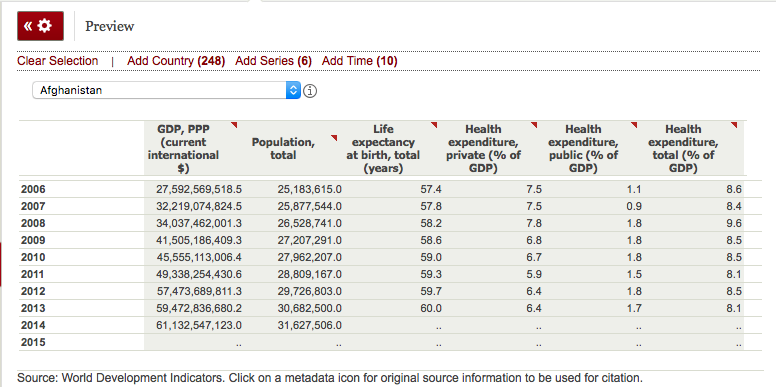
-
Now let’s go and Export
-
If you click on the Export button a pop up will appear asking you for the format. Select CSV.
-
It will automatically download the file – store and name it in a folder so you remember where it comes from and what it is for.
Last updated on Sep 02, 2013.

